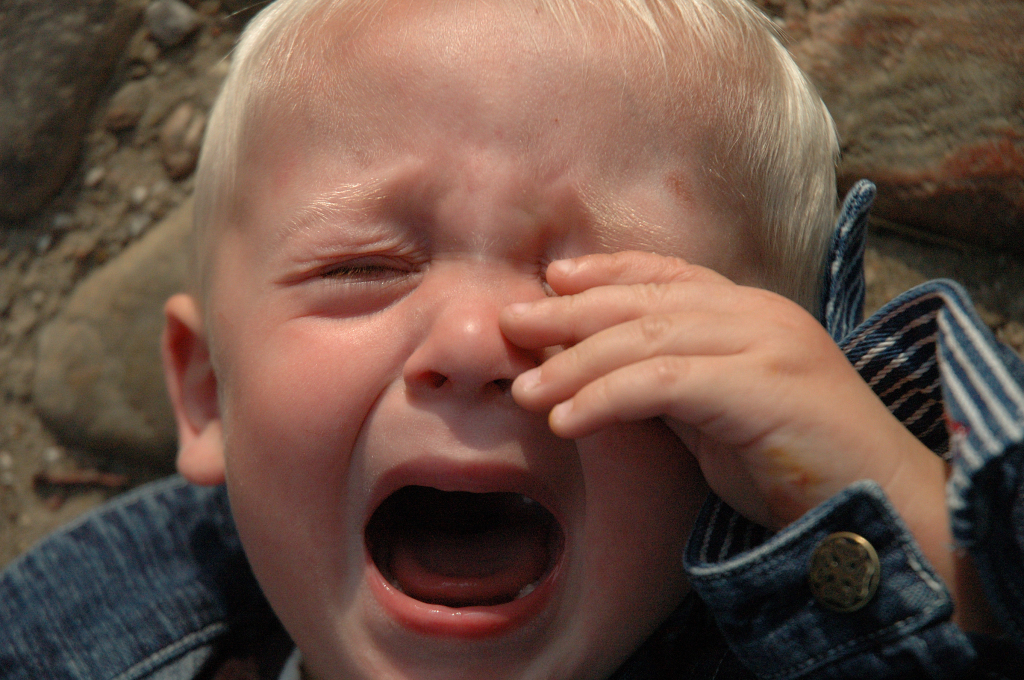One of the commonest complaints from parents (second only to My child does not eat) is “My child is crying bitterly, cannot be pacified. Please do something”.
Although a child is expected to cry, evaluation of a cry will help identifying the reason.
Crying is a child’s first language; a cry is a child’s natural response to some unpleasant stimulus. It may be expression of one of the following
- A bodily need – hunger, sleep, needs to be held/ cuddled
- Showing anger; protesting against a loud noise, too much light
- Reporting discomfort – wet diaper, soiling and
- Conveying a problem – pain, distress
Evaluating a cry
One needs to learn by experience; for the uninitiated using logic and a systematic approach helps.
But why should I learn to evaluate? I will go to my Doctor – is the usual response!
More often than not, such an incident occurs at night or when the doctor is not available and at times even waiting for few hours can be catastrophic.
Step 1
Differentiate a cry that you should worry about, from others. A cry that starts suddenly, is severe and persistent, child inconsolable and difficult to control with/ without some accompanying symptoms is a PATHOLOGICAL CRY (PARENTS SHOULD WORRY!).
Step 2
- Rule out hunger/ thirst as the cause
- Ensure that child has passed urine/ stools as expected. Constipation and/ or urine retention is quite distressful.
- Ensure that all the limbs are moving freely – a bitterly crying child would have limbs flying all over. Check whether a particular limb is not moving in sync with others. Dislocation of an elbow is very common and extremely painful or an injury that parents may have missed
Step 3
Check all orifices (openings)
- Urethral opening – most common inflammation/ infection in infants
- Boys –phimosis (tight opening of the foreskin that does not permit full retraction) and balanitis (opening red and swollen), that may surprise many a parents and physicians, do very commonly lead to crying spells
- Girls – the Indian habit of sprinkling talcum powder directly on the groin à caking of the powder with sweat/ urine à skin excoriation à bitter cry
- Anal opening – a tiny fissure or skin excoriation due to increased frequency of stools and / or wet nappies/ diapers
- Mouth – any blisters, thrush (curdy coating on the tongue) accompanied by refusal to accept feeds
- Nostrils – are they blocked due to secretions – there is suction bulbs available or use of saline nasal drops will ease the discomfort and the cry
- Ear – better left for the doctor; but inspecting it to see any boil on the outside. Ear infection (otitis media) is a common cause of a pathological cry and can be catastrophic if missed as the brain is just 1 inch away and infection can spread.
All of the above is just for a parent not to feel helpless and in my case, asking leading questions has helped in providing relief to many a crying babies and the parents in the middle of the night.
Dr Chander Asrani, is a post-graduate in Family Medicine. He has over 37 years in family practice and has been offering wellness and disease management services to corporates. He is soon to launch virtual clinics. He writes on various subjects of wellness; learning to live with chronic ailments and stress. Know more about him at about.me/drasrani.




Please comment with your real name using good manners.